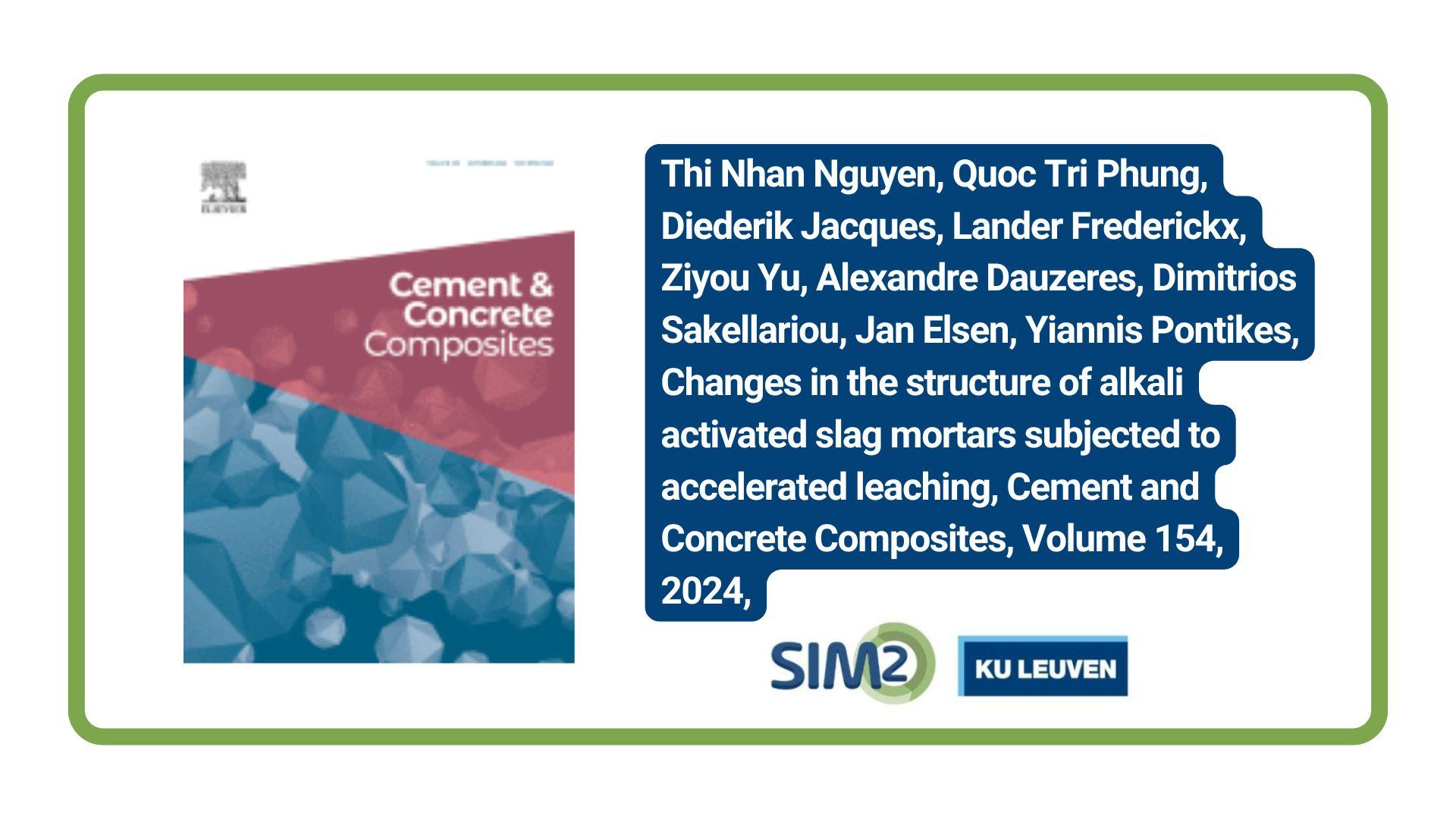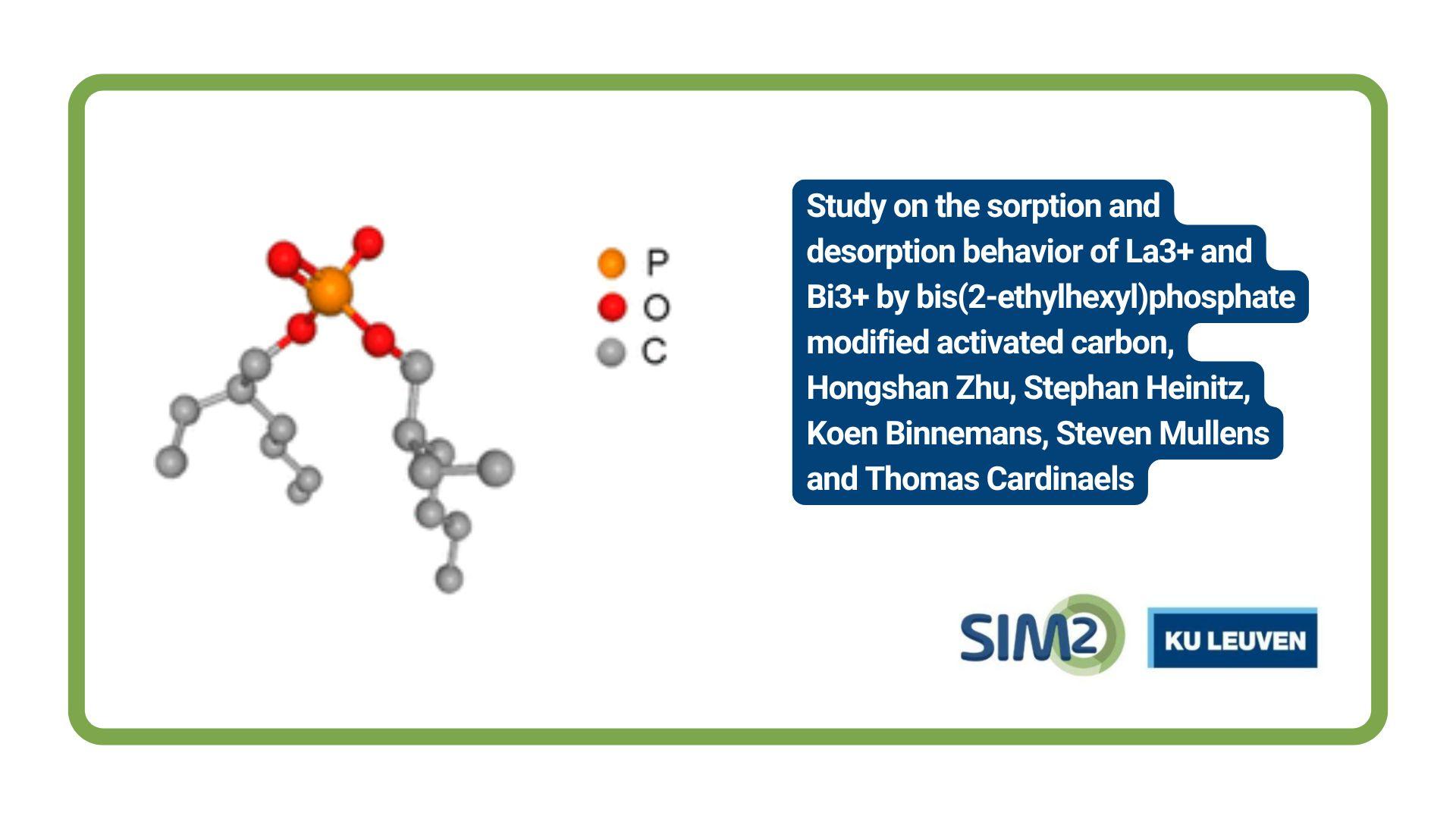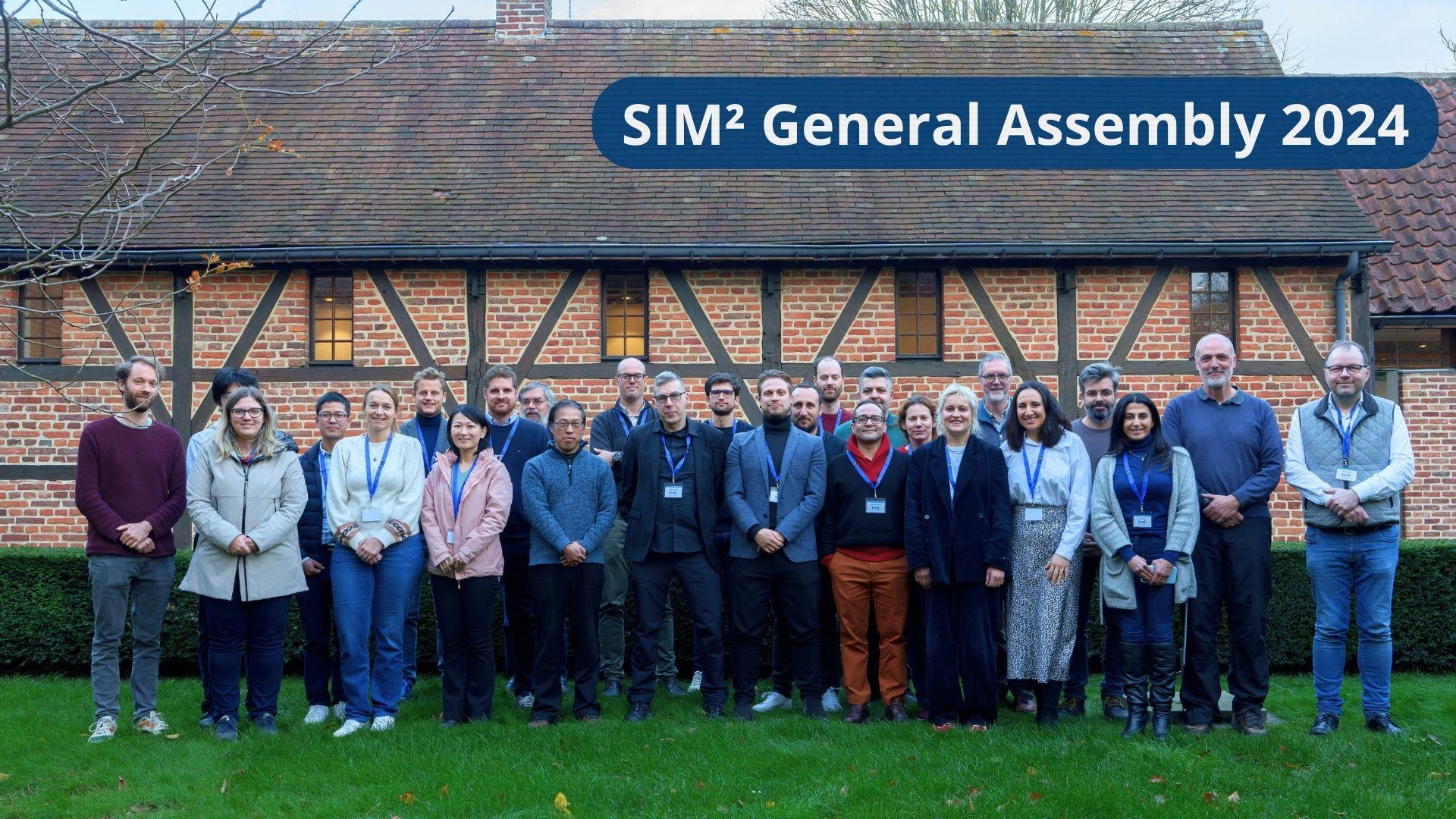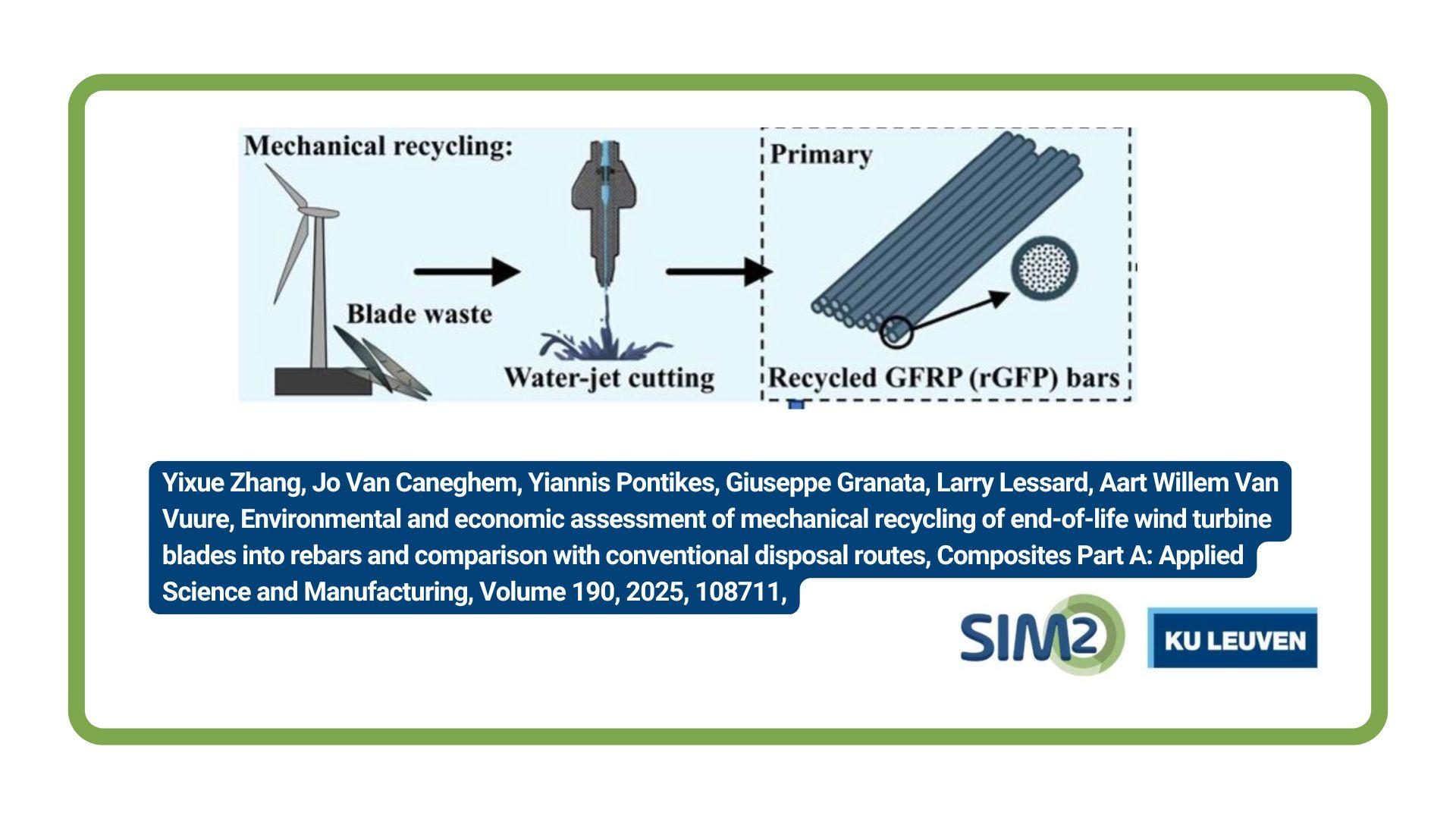Thi Nhan Nguyen of the Department of Materials Engineering, KU Leuven, together with colleagues from France and Belgium, has published a new article on changes in the structure of alkali-activated slag mortars subjected to accelerated leaching. The article is published in the the journal Cement and Concrete Composites.
The chemically induced degradation of alkali-activated materials exposed to the surrounding environment is a critical concern for durability. In this study, the leaching of alkali activated slag mortars (AASs) subjected to a 6M NH4NO3 solution was investigated by integrating techniques including ICP-OES, XRD/QXRD, TGA/DSC, ATR-FTIR, and 29Si MAS-NMR. The results revealed that the main leachable elements from the AASs and their leaching rates decreased in the following order: Na, K, Ca, and Mg. In contrast, Si and Al, the key elements in the C-A-S-H gel, displayed a remarkable resistance to leaching. Upon NH4NO3 attack, the primary phase (C-A-S-H) becomes more siliceous and has a greater mean chain length through decalcification and dealumination. The second phase, Mg, Al-layered double hydroxide (Mg, Al-LDH, or hydrotalcite), incorporated nitrate from the surrounding solution, sulfate from precursor dissolution, and Ca from gel decalcification to form nitrate/sulfate-bearing Ca, Al-LDH phases. Remarkably, the water-to-binder ratio exerted a nuanced influence, dictating the pace of element leaching, while exhibiting a relatively modest impact on the stability of the solid phases after 28 days of exposure. This work proposes a leaching mechanism for understanding the leaching process occurring in AASs based on an in-depth experimental exploration of mineralogical alterations.
Reference
Thi Nhan Nguyen, Quoc Tri Phung, Diederik Jacques, Lander Frederickx, Ziyou Yu, Alexandre Dauzeres, Dimitrios Sakellariou, Jan Elsen, Yiannis Pontikes, Changes in the structure of alkali activated slag mortars subjected to accelerated leaching, Cement and Concrete Composites, Volume 154, 2024, 105755, ISSN 0958-9465, https://doi.org/10.1016/j.cemconcomp.2024.105755.
Aknowledgement
This work has received funding (in parts) from the Belgian Energy Transition Fund (ASOF project), IRSN (France), and the European Union's Horizon 2020 Research and Innovation Programme for Nuclear Fission and Radiation Protection Research (Call NFRP-2019-2020) under grant agreement No. 945098 (PREDIS). The authors would also like to thank Tom Maes for helping with sample casting.





